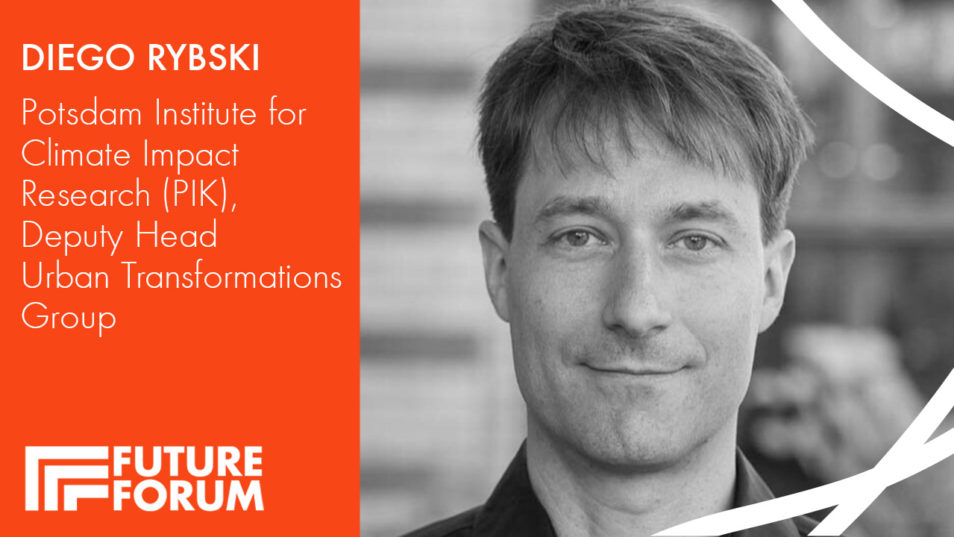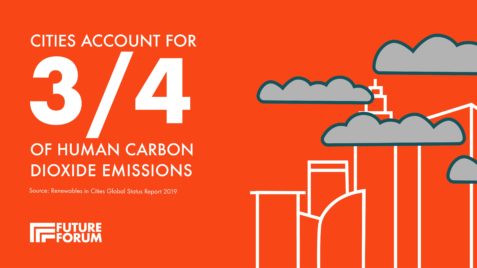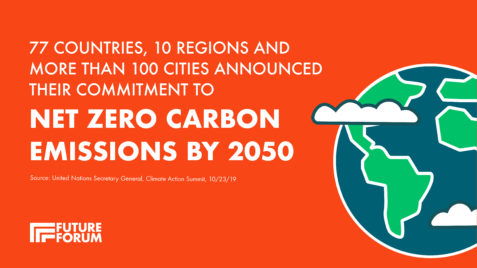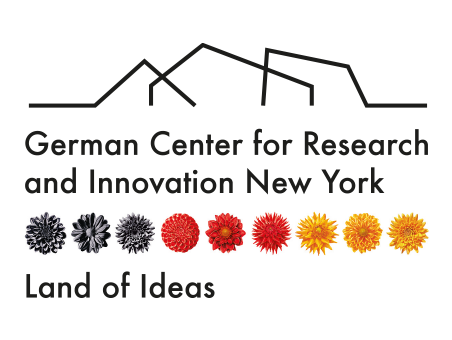Predicting the Urban Eco-Future

Because cities hold a growing portion of the world’s population, they are an increasingly important locus of planning for climate change. Dr. Diego Rybski studies the impact of climate change on cities. He is Deputy Head of the Urban Transformations Group at the Potsdam Institute for Climate Impact Research (PIK) and presently a visiting scholar at UC Berkeley. What’s an urban heat island, and are cities soon to be underwater? Let’s see what Dr. Rybski has to say.
DWIH: Hi, Diego! The 2020 focus topic of the German Centers for Research and Innovation is cities and climate change. We’ve been waiting almost a year to talk to an expert about the exact relationship between these topics. Thanks for agreeing! Let’s hop in.
Urban reactions to climate change vary from mitigation to adaptation to resilience. What should cities be doing right now to react to the climate emergency?
Rybski: In my opinion, cities need to take multiple actions. On the one hand, this includes the reduction of carbon emissions. And on the other hand, it includes the adaptation to unavoidable consequences from climate change. But every city is different – so are the challenges. Fortunately, some measures can be tackled in a similar way. For instance, urban greening has multiple benefits and nature-based solutions can be implemented in many cities.
In any case one should not forget the people living in the cities. They often know their quarter best and involving them increases the acceptance of the measures. Doing so one should also keep equity in mind. Green space can affect the real-estate market and increasing rents might force people to move, which represents an unintended consequence.
DWIH: Local and community-based approaches to climate adaptation have come up a lot in preparation for our conference the FUTURE FORUM: Building Biopolis. Let’s follow that trail a bit more. To what extent do urban officials now regard climate-change adaptation as something not following a global template, but involving local people, local experiments, and local conditions?
 Rybski: I have the impression that many German and European municipalities are conscious about climate impacts and are seeking local solutions. The problem is that many municipalities are struggling with already tight public funding, so that there is little room for such an “extra engagement.” At least within EU projects I am aware of interesting participatory climate change adaptation approaches.
Rybski: I have the impression that many German and European municipalities are conscious about climate impacts and are seeking local solutions. The problem is that many municipalities are struggling with already tight public funding, so that there is little room for such an “extra engagement.” At least within EU projects I am aware of interesting participatory climate change adaptation approaches.
DWIH: Taking a step back to look at cities more broadly, what effect does the complexity of a city have on the adaptation to climate change?
Rybski: The complexity of cities is reflected in conflicting objectives. Compact urban development has the advantage of short distances in the city, but often comes with the disadvantage of intensified urban heat. Conversely, low-density development is advantageous in terms of urban heat, but implies long distances. These are just two factors and generally, but there are many more aspects and interests. A maybe more tangible example are car-free neighborhoods. Pedestrians and cyclists probably appreciate such measures, but for car-owners such a neighborhood might represent an obstacle.
DWIH: That’s exactly the topic we’re covering in our Oxford Debate at the FUTURE FORUM. We’re certainly excited to hear both sides on that topic.
In your work you have described how cities often have their own climates, “city climates,” which differ from those in the nearby countryside. Can you explain this concept and its implications to us?
Rybski: It is actually not a concept but rather a phenomenon. Imagine the evening of a hot summer day and you ride your bike from the lake in the vicinity into your city. Often there will be a noticeable temperature difference. During the day concrete and pavement absorbs sunlight and stores the heat while the rural surroundings are usually covered by cooling vegetation. Many mid-latitude cities are warmer than the nearby countryside, in particular in summer.
As a consequence, the burden during heat waves is even bigger, when 35°C (95°F) are measured in a city and only 30°C (86°F) in a nearby village. As a rule of thumb, the larger the city the larger the effect. Such heat waves represent a health risk for the population, in particular for the elderly.
DWIH: When thinking about city climate and measuring these kinds of effects, is it possible to predict which areas could be particularly affected and what damage could be caused by climate change and extreme weather events?
 Rybski: Climate change can lead to an intensification of such heat waves. This means they can become more frequent or stronger.
Rybski: Climate change can lead to an intensification of such heat waves. This means they can become more frequent or stronger.
Another area particularly affected are coastal cities. Storm surges represent a complex combination of sea-level, tides, storms, and waves. On the one hand, climate change can intensify the storms, and on the other hand sea-levels are rising due to thermal expansion and melting land ice (Greenland, Antarctica). Together, more surges and consequent damage needs to be anticipated. One should also keep in mind that a large share of population lives in cities in low-lying coastal areas.
DWIH: Finally, let’s chat about a the very present crisis. Developments during the COVID-19 pandemic show insights for the efforts to mitigate climate change. Can you say which ones?
Rybski: The COVID-crisis massively affected public life in most countries. During the shut-down carbon emissions were significantly reduced. But this happened at the sacrifice of something, namely the eschewal of many social activities that we are so used to. Last but not least the economy is heavily affected on a range of sectors. In the climate context a more healthy reduction of carbon emissions is desirable, where fossil energy sources are fading out while the needs of society are still fulfilled and economy is not declining.
The COVID-crisis also shows something else. Society is able to react to emergency. Although, I also need to add that the pandemic is not over.
DWIH: Thanks for chatting, Diego! We can’t wait to hear your keynote on these topics at the FUTURE FORUM October 14.
Hear Dr. Rybski’s keynote spotlight “The Future of Climate” by participating in the FUTURE FORUM: Building Biopolis. Register for the free, virtual conference today at: www.dwih-futureforum.org.
